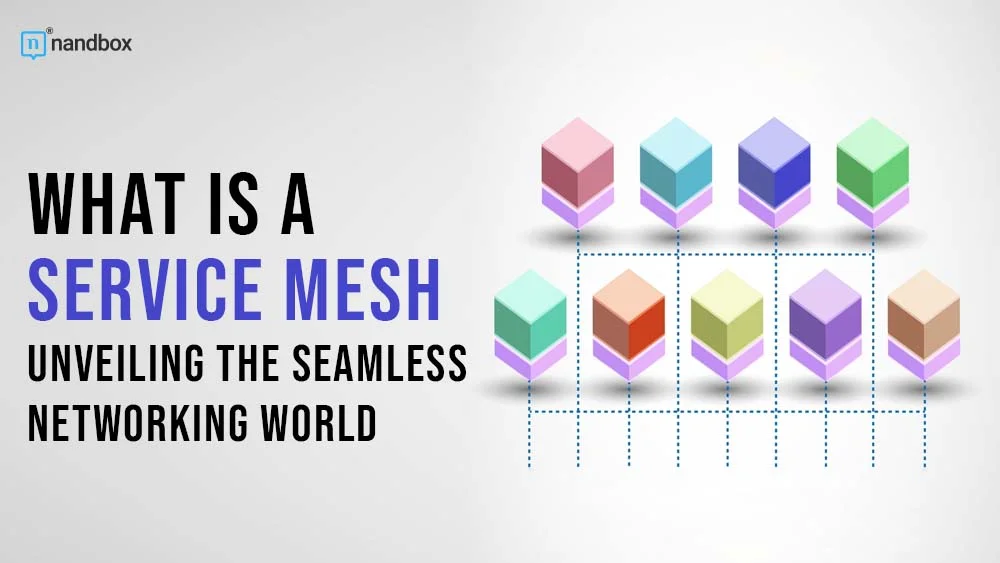Service Mesh: Empowering Microservices with Enhanced Communication and Control
In the recent surge of modern applications, connectivity is paramount. The NTRIP service plays a pivotal role in linking various networks, unveiling a vast world that remains largely unexplored to many. As the world becomes more interconnected, not only people but also devices communicate! And at this point, even app components do. With the rise of distributed systems of applications, it is important to find a way to facilitate the ongoing data exchange between the components to allow applications to run seamlessly. Now, how could this be done? Luckily, a service mesh is here! It’s an essential part of technology that’s come to have a crucial function in the industry. In this article, we’ll explore service mesh in detail, exploring its definition, purpose, and basic functions that make it an integral part of modern software and app development.
What is a Service Mesh?
Advanced technology now allows devices to connect and communicate together to send and receive data. This, of course, can be done through IoT and WiFi networks. However, these are devices, but what about applications like microservices, for instance? We all know that microservices applications consist of independent components, each having its own function. However, in the end, they all have to operate as one full unit.
So, do they also have a way of communicating where they can exchange data and insights? Absolutely. This is the purpose behind such an approach. A service mesh is a layer added to the infrastructure of microservice applications to facilitate ongoing service-to-service communication and make operations and performance much more seamless. Service mesh doesn’t mean that two different applications can communicate, as this can be under the features of APIs; it also means that different parts of an application can communicate and exchange insights. The main function of a service mesh is to regulate and monitor network services and connectivity.
Service Mesh vs. APIs: Identical or Fraternal?
So, we may have hinted previously that service mesh and APIs have a bit of similarities and differences. So, are they identical or fraternal? Well, in this case, we can say that service mesh and APIs are certainly fraternal. How is that? Let me tell you. Both a service mesh and an API have an apparent purpose, which is to facilitate the connection between applications. Well, this is similar. The difference lies in the parts that each can be responsible for and their communication.
For instance, the service mesh is only entitled to the separate elements in microservices, which lie inside the application itself. It has nothing to do with anything on the outside. On the other hand, APIs are fully responsible for external communication with other applications and servers. For instance, if you want your shopping application to be connected and exchange data with a banking application, this is 100% an API.
How Does Service Mesh Work? Exploring the Many Layers of Service Mesh
The process by which service mesh works is very interesting, so let us explore it together
The service mesh is divided into two parts: the data plane, which is responsible for getting all the inbound and outbound data, and the control plane, which is responsible for configuring the latter’s functions.
Besides each part of any microservice component, it has an element known as a sidecar. The sidecar is a network proxy that is present beside each and every component, as they can’t function without it. Once a microservice receives any incoming or outgoing traffic, this side can start functioning accordingly and handle it on the microservice’s behalf. And this is what makes the data plane
The data plane has four functions, which are
Routing:
Traffic is directed from one microservice to another through proxies in the data plane, according to policies and rules established in the control plane.
Load Balancing:
With this method, the load of users accessing a service is evenly spread over numerous servers to avoid overloading some while others don’t work.
Security:
Data plane proxies enforce security protocols such as mutual Transport Layer Security (mTLS) encryption, authentication, and permission.
Observability:
In order to monitor and fix traffic issues, the data plane gathers data like metrics, traces, and logs and sends them to observability tools.
Now is the control plane’s time to shine. Beside each network proxy, aka sidecar, comes a new component called the control plane. As we all know, the data plane is made up of proxies, which need to be configured in order to perform and behave well. In this case, the control plane plays the big sister part and controls all the proxies and the data plane components. It acts as the centralized control and management hub for the entire service mesh.
The control plane has four main functions, which are:
Configuration Management:

It’s a configuration tool that lets network administrators set up things like routing rules, traffic policies, and security policies.
Traffic Control:
Advanced routing techniques, such as circuit breaking, can be specified in the control plane.
Security Policies:
The control plane specifies and implements security measures, including rate limitations and access restrictions.
Dynamic Updates:
It allows for the dynamic management of microservices by allowing configuration and routing rules to be updated in real time.
The Advantages and Drawbacks of a Service Mesh
Advantages:
Resilience
A service mesh can automatically handle things like circuit breakers, timeouts, and retries. Because of this, your application will be more resilient in the case of failures, no matter how severe they are.
Security
All communications between services are encrypted using mutual TLS (mTLS), and only those that have been authenticated and approved can send and receive data. The protection of internal communications within the set is significantly aided by service meshes.
Observability
The data sent in a service mesh can be monitored in great detail. This involves the use of metrics, tracing, and logging, all of which are essential for keeping an eye on and troubleshooting distributed systems.
Service Discovery
Service meshes streamline the process of locating relevant services. Instead of directly working with IP addresses and ports, they enable services to discover and communicate with each other by using logical service identities.
Multi-Platform Support
You can employ many service mesh solutions with different cloud providers and continuous integration technologies like Kubernetes and Docker Swarm. In a world with varying market conditions, the ability to adapt to the service mesh tools offer is useful.
Drawbacks:
Cost
There may be additional expenses associated with implementing a service mesh, such as licensing fees for software solutions and the personnel needed to run and maintain it. That is why you need to think about how much money you have in your budget to avoid overspending.
Latency
Sidecar proxies, which are commonly used in such architectures, can increase request delays, especially for frequently used, lightweight services. The performance of your application can suffer if this delay isn’t measured and managed properly.
Complexity
The complexity of your infrastructure may increase after implementing a service mesh. It can be difficult and time-consuming to set up and configure the mesh, manage certifications, and deal with the different functions and microservices.
Version Compatibility
Because of the rapid development of service mesh technology, compatibility issues between mesh component versions and your application’s code may arise and cause difficulties in the maintenance and upkeep of your application.
Resource Requirements
Sidecar proxies, control, and data plane components place a greater demand on system resources, which can cause problems in environments with scarce resources or during periods of high traffic volume.
Compatibility Issues
Existing applications and services may prove difficult to include in a service mesh if they were not built with the concept in mind. This is due to the fact that a service mesh has specific requirements and architecture that can be difficult to employ in a pre-existing application.
Service Mesh Tools to Consider
If you think that a service mesh is difficult to implement, then you definitely thought wrong. What you don’t know is that there are plenty of open-source tools that make deploying this infrastructure layer as easy as pie. So, let us list a few.
The first and most popular service mesh tool is Istio. Google owned Istio before it became an open-source tool that everyone could use. Isito is well known for its sophisticated features, such as security and traffic management. To protect information that travels between microservices, you can use Istio’s mutual TLS (mTLS) encryption feature. In addition, it has strong authorization, authentication, and encryption capabilities. It is worth mentioning that this tool is in use by Google itself and other renowned companies like Adobe.
Another tool is Linkered, which is also an open-source tool. The basic, straightforward style of Linkerd has earned it widespread acclaim. It’s a flexible service mesh that excels in both usability and reliability. Additionally, it possesses unique and exceptional features like automatic timeouts and load balancing. If you’re searching for a simple way to improve the safety and dependability of your microservices, Linkerd is something to consider.
The Last Question: Does Your Business Need a Service Mesh?
Time for the mega-great question: does your business need a service mesh? As we explored in the previous sections, it is only applied to modern applications developed using microservices. Usually, monolithic applications, which are a very common type, especially among small businesses, don’t need a service mesh. This is due to the fact that they consist of only one entity and are not divided into different components, like in microservice applications. So, if you have a small application and are taking your first baby steps using monolithic architecture, you won’t need a service mesh this much. However, in the near future, if you intend to scale, a microservice application and a service mesh would be ideal for you. That is because they are both easily deployed and scaled according to what the market requires and what you want.
The world of advanced and modern applications, including microservices and service mesh, is indeed an exciting one. It introduces us to new, limitless possibilities for software functions that we would have never imagined. This leaves us to wonder: What should we expect next?





